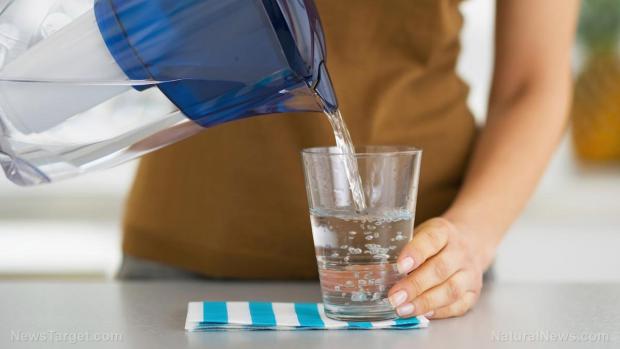
Breaking News
 Amish Butter Canning Method | Preserving Butter Without a Pressure Canner
Amish Butter Canning Method | Preserving Butter Without a Pressure Canner
 Russia-Flagged Tanker Seized by US Coast Guard After Slipping Past Venezuela Blockade
Russia-Flagged Tanker Seized by US Coast Guard After Slipping Past Venezuela Blockade
 WASHINGTON SAYS COMPLY OR DIE | The State Just Destroyed an Elderly Farmer Over a Road.
WASHINGTON SAYS COMPLY OR DIE | The State Just Destroyed an Elderly Farmer Over a Road.
 Lies And Corruption Tarnish Trump's Venezuela Operation
Lies And Corruption Tarnish Trump's Venezuela Operation
Top Tech News
 The First Production All-Solid-State Battery Is Here, And It Promises 5-Minute Charging
The First Production All-Solid-State Battery Is Here, And It Promises 5-Minute Charging
 See inside the tech-topia cities billionaires are betting big on developing...
See inside the tech-topia cities billionaires are betting big on developing...
 Storage doesn't get much cheaper than this
Storage doesn't get much cheaper than this
 Laser weapons go mobile on US Army small vehicles
Laser weapons go mobile on US Army small vehicles
 EngineAI T800: Born to Disrupt! #EngineAI #robotics #newtechnology #newproduct
EngineAI T800: Born to Disrupt! #EngineAI #robotics #newtechnology #newproduct
 This Silicon Anode Breakthrough Could Mark A Turning Point For EV Batteries [Update]
This Silicon Anode Breakthrough Could Mark A Turning Point For EV Batteries [Update]
 Travel gadget promises to dry and iron your clothes – totally hands-free
Travel gadget promises to dry and iron your clothes – totally hands-free
 Perfect Aircrete, Kitchen Ingredients.
Perfect Aircrete, Kitchen Ingredients.
 Futuristic pixel-raising display lets you feel what's onscreen
Futuristic pixel-raising display lets you feel what's onscreen
 Cutting-Edge Facility Generates Pure Water and Hydrogen Fuel from Seawater for Mere Pennies
Cutting-Edge Facility Generates Pure Water and Hydrogen Fuel from Seawater for Mere Pennies
Simple and effective ways to purify your water during emergencies

(Natural News) Say you're already seeing the onset of a disaster and the situation is forcing you and your family to bug out. There may be some others who want to join you. The immediate problem that comes up is the amount of drinking water for everyone on board. With your perilous journey ahead, it may be difficult to simply carry an adequate amount. How will you ensure that everyone, including yourself, will have enough water to drink until you arrive at a bug-out shelter? (h/t to MDCreekmore.com)
Purifying water using chemicals
One of the most common ways of purifying water is using unscented household bleach. Make sure you use a brand with no scents or additives.
Here is a simple formula for using bleach to purify water:
Put eight (8) drops (1/8 teaspoon) per gallon / four (4) liters of water. Let stand for 20 minutes. Repeat if water does not smell of chlorine.
Caution: Only do this twice (a total of 16 drops).
It's important to remember that bleach does have some problems. For one, it has a limited shelf life (six months to two years). Second, it's messy and nasty to clean up if spilled.
The limited shelf life of bleach poses a problem when packing a BOB (bug-out bag). A more economical alternative is to use "pool shock," a common ingredient used to make pools safe for swimming. It is available at your local pool supply store or online. Make sure that calcium hypochlorite is the only active ingredient in the product and that it contains no added algicides or fungicides. Anything that has additives in it can seriously endanger everyone, including yourself.
Here is a simple formula for using pool shock to purify water:
Mix one (1) heaping teaspoon (about ¼ ounce) into two (2) gallons of water. The mixture will produce a chlorine solution of approximately 500 mg/L since the available chlorine in calcium hypochlorite is equal to 65 percent of its weight.
To treat water, add one (1) part of chlorine solution per 100 parts of water. This is roughly equal to adding 1 pint (16 oz.) of stock chlorine per 12.5 gallons of water. The chlorine solution can purify a total of 200 gallons of water.
This stock solution also has a limited shelf life, so you should only prepare it when you need it. Generally, dry chemicals like pool shock will last for two to three years if stored properly. Keep it in an airtight container, store it in a cool, dry, dark location, and don't allow temperature fluctuations. (Related: Do you have a safe source of water for a SHTF situation? Top 5 water purification mistakes.)
Pool shock in one-pound bags absorbs moisture from humid air and can dissolve in 12 to 24 months. For longer-term storage, re-pack into Ziploc bags or buy chlorine granules sold in buckets.



